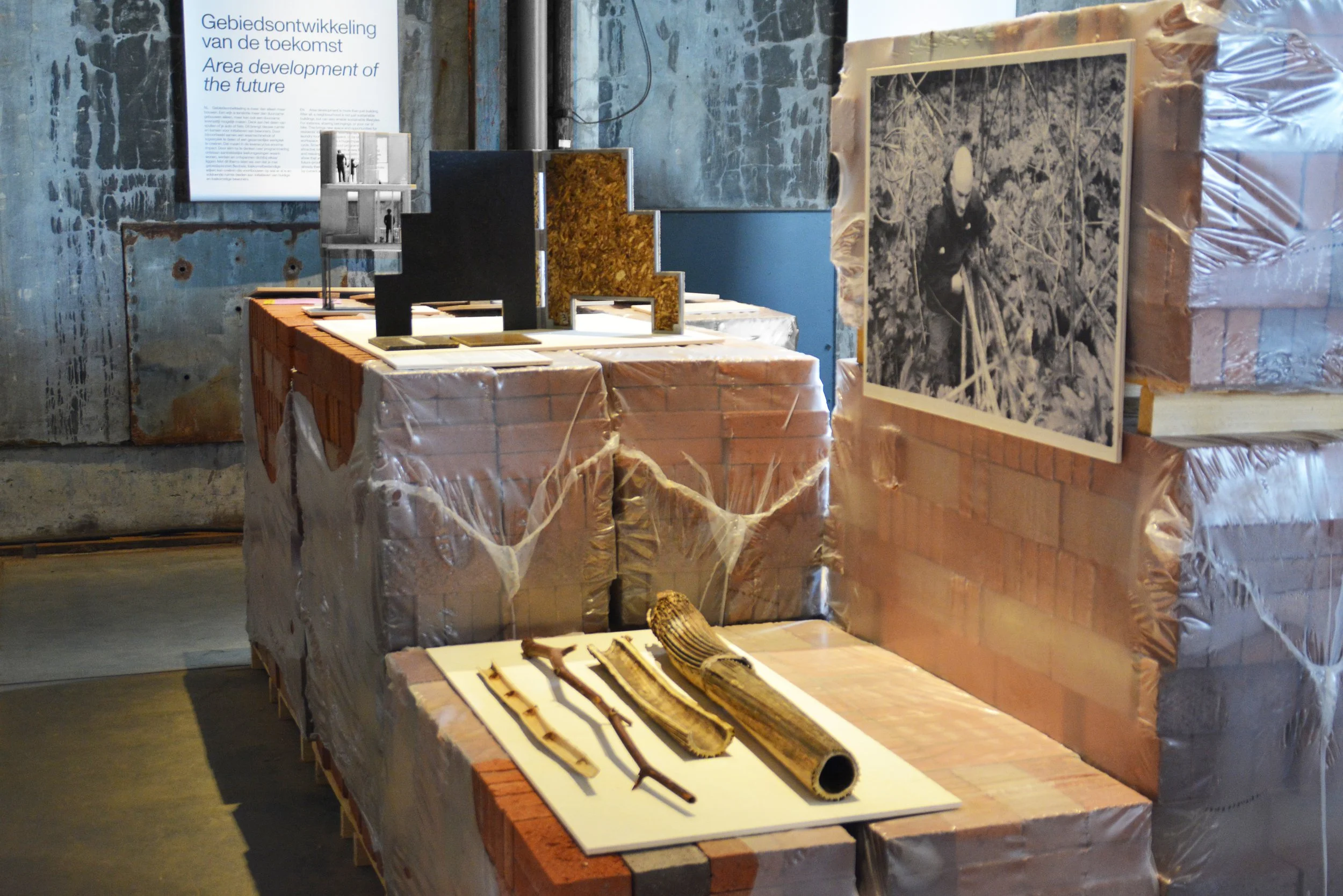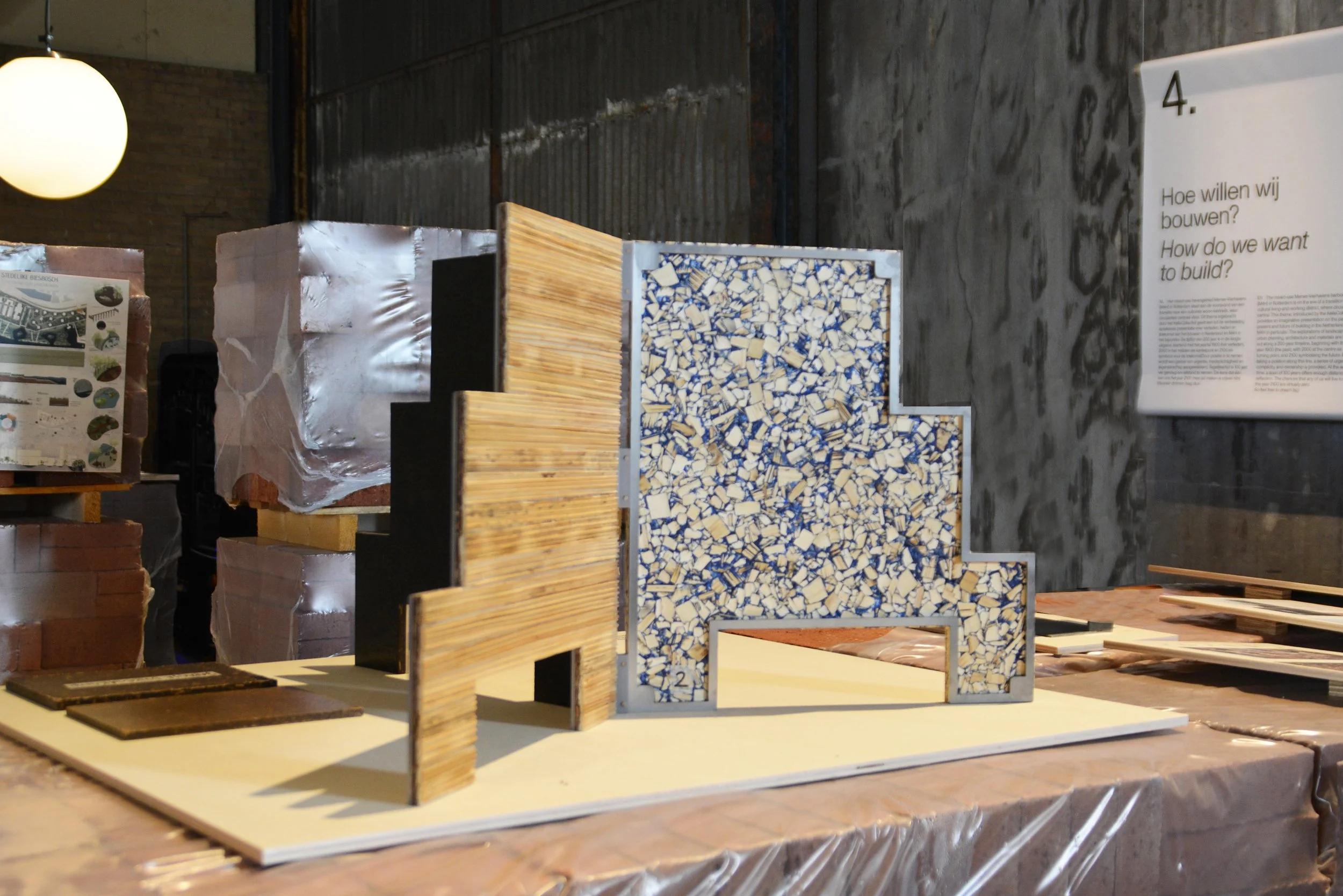
Rotterdam's Invasive Exotics: From Nuisance to Beauty
In Rotterdam, an unexpected treasure of raw materials is growing along roadsides, riverbanks, and vacant lots: invasive exotic plants such as Japanese knotweed and Giant Hogweed. These non-native species displace local flora and can damage infrastructure. To keep them under control, they are often mowed down and incinerated a waste of energy and materials that clashes with the ambitions of a circular city.
Atelier Schaft & Why Knot show that there is another way. They harvest these invasive plants on-site, separate the fiber-rich stems from the leaves, and press them into a new family of sustainable interior materials. Everything takes place within Rotterdam’s city limits, without the use of chemical binders. The result: materials that not only emit zero CO₂ but absorb it.
The outcome is showcased in this compact installation. The 3D model an homage to Rotterdam’s first wooden residential building at the Lloydpier is clad in materials made from invasive exotics.
The installation demonstrates how untapped local resources can contribute to a Paris Proof neighborhood. By transforming problem plants into usable building materials, it becomes clear that sustainable innovation is not only necessary but also feasible practically, economically, and aesthetically.



